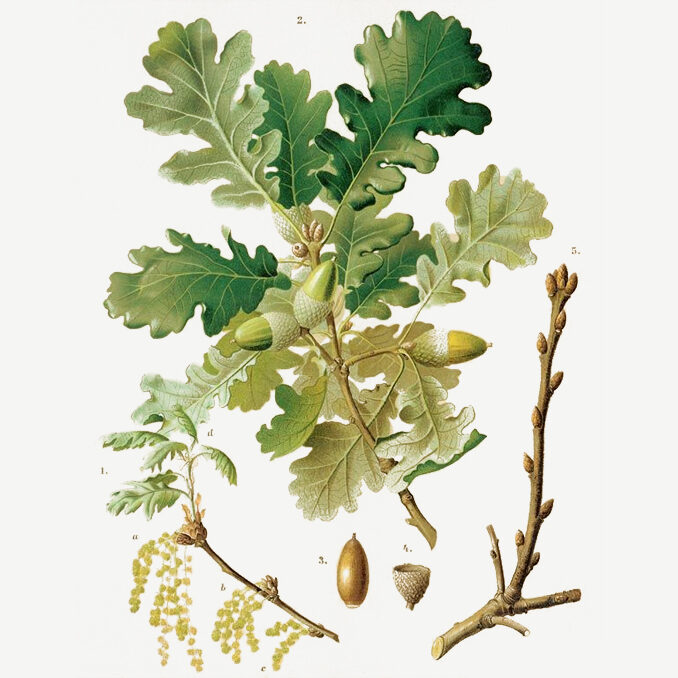The oak is a long-lived species and can reach a height of 25 m with diameters of the trunks even of 2,5 meters.
The stem is relatively short with dark grey bark, equipped with hard, wrinkled and trapezoidal scales. The trunk divides in branches also sinuous that create a wide and globose crown in the isolated specimens.
The downy oak is a thermophilic, heliophilous and very frugal species, suitable for arid conditions and calcareous, clayey, arid and rocky soils. It can be up to 800 meters high
The root system is very developed and robust; it has a central taproot that penetrates deep (even into the cracks of the rocks) and strong lateral roots.
The leaves are alternate, coriaceous, with short and hairy petiole; the profile is ovate-elongated with 4-7 pairs of lobes. The length is very variable, ranging from 5 to 10 cm. The upper page is bright green while the lower one is pubescent and lighter.
The male flowers are carried by pendulous and pubescent inflorescences (aments); the female flowers have a short peduncle and develop at the axil of the leaves. The flowering occurs at the same time as the emission of the new leaves (March-April).
The fruit is the characteristic 'acorn' of the oaks, very variable in length. Its dome is hairy and has linear-lanceolate scales; this includes the acorn for about one half. The acorn is carried by a very thick and tomentose peduncle.
The term 'pubescens' comes from the presence of hair spread on petioles, buds, leaves.
Peculiar characteristic of the downy oak are the 'semi-persistent' leaves; these do not all fall in autumn but when the buds start to sprout ub the spring.
In southern Europe, the Downy Oak is one of the most common species in oak and mixed deciduous woods. It is common in hilly and lower mountain environments. It grows from 500 meters tall up to 1200-1400 meters.
The name of the genus 'Quercus' seems to have a dual origin: one from the Celtic terms 'Kaer' and 'quer' ('beautiful tree' and 'tree par excellence') and one from the Greek, to indicate the roughness of the bark. It is one of the species having the greatest number of monumental specimens in the cultivated areas or close to the houses. The wood of this plant is widely used as fuel; in the past it was an important material for making beams and in shipbuilding. Acorns are used for feeding pigs and, in the past, they were roasted and used as a substitute for coffee.
In ancient times large specimens of downy oak were venerated. It seems that the Romans, when they arrived in the forests of Germany, were terrified by the size of the oaks; Pliny the Old wrote that they seemed 'originated together with the world', that means ancient as the earth itself. Inside the pastures can be found isolated specimens or group of Downy Oak that in popular slang are called “merigge”. The name comes from the Latin meridies, which means 'resting', or enjoy the shadow. These trees serve for the rest of the livestock during the hottest hours of the summer days. Dante Alighieri himself uses in a verse of Purgatory, in a metaphorical sense, a very detailed image of the 'resting”(Meriggiare in italian).


